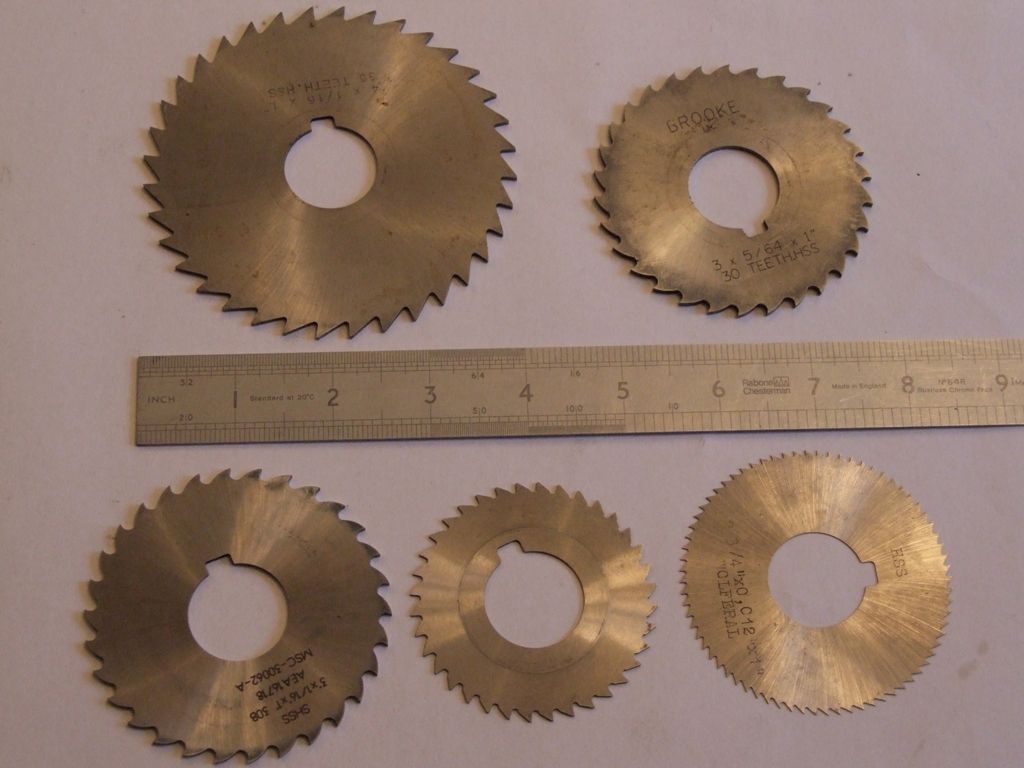Posted by Niels Abildgaard on 18/07/2017 06:47:01:
Do You mean 0.1mm per tooth?
This gives 8mm per rev on my best 100mm slitting saw.
Yes I do. Your figures imply 80 teeth on the cutter. I would regard that as a fine pitch cutter, not really suited to anyrhing other than shallow slotting. Here's a picture I took earlier:

The definition isn't clear cut (pun not intended, but couldn't resist it) but the slitting saw bottom right is fine pitch. I only use them for shallow slots, as on screw heads. The problem with deeper cuts is that the gullets get jammed with the swarf; equals a broken cutter. The other slitting saws shown are coarse tooth and will happily cut a deep slot in one pass. If I have a deep slot to cut I'll use a DOC of at least 10mm per pass.
As Jason says slitting saws won't be running fast. So if we take a coarse 100mm slitting saw with 36 teeth in mild steel it'll be running a bit under 100rpm. At 0.1mm per tooth that gives a feedrate around 360mm/min. In practice I run slitting saws slower than calculated, even with flood coolant there's some steam produced. I'd run a 100mm cutter at 60rpm and a proportionate feedrate.
Andrew
choochoo_baloo.





